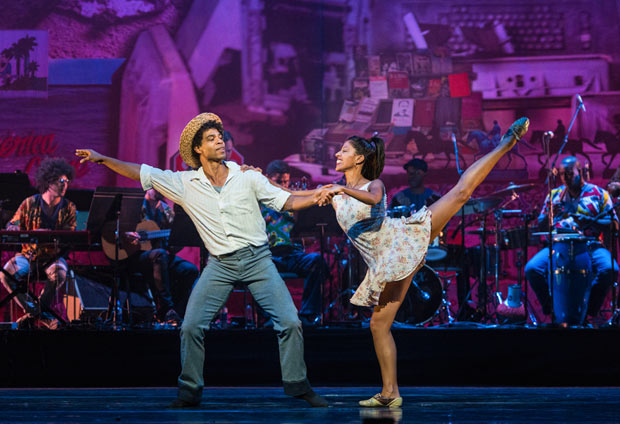
© Foteini Christofilopoulou. (Click image for larger version)
Carlos Acosta
Cubania: Derrumbe, Sight Unseen, Ecuacion, Flux, Tocororo Suite
London, Royal Opera House
27 July 2015
Picture albums by Foteini Christofilopoulou: Tocororo Suite, Derrumbe
www.carlosacosta.com
www.roh.org.uk
Like the returning swallow, Acosta has again brought his own promise of summer sunshine to London with his unique brand of Caribbean culture. And it’s not every day that you find yourself wiggling your hips and tapping your toes while sitting in the Royal Opera House auditorium. But that’s the effect that Acosta and his fellow countrymen – musicians and dancers alike – bring to the stage in Cubania, a mix of contemporary works and a Reader’s Digest version of his semi-autobiographical work, Tocororo.
Acosta is one of the most gifted, respected and charismatic dancers of this age and also a fervent and stalwart ambassador for the culture of his native land. He has been dancing with the Royal Ballet (RB) now for 17 years and is still pulling in the crowds, as was seen at the packed Opera House on opening night, which gave rise to the thought that, perhaps as for Sylvie Guillem, there is a determination to see Acosta before he finally hangs up his classical shoes next year. More dancing left in him yet though – he says wants to focus on contemporary dance.

© Foteini Christofilopoulou. (Click image for larger version)
And this is how he planned his two act programme, opening with four short works, all with Cuban connections and contemporary movement. Dancing in two of them, the first was Derrumbe (Collapse) by Miguel Altunaga, in which he partnered Pieter Symonds. Caught in freeze-framed poses in three consecutive spotlights before the physical action begins, the work shows the breaking up of a passionate relationship that builds with guilt and anger towards domestic violence. Acosta was in excellent form showing powerful control and strong suppleness in the un-balletic movements, while Symonds danced with finely-tuned resilience and vigour, bouncing back after every confrontation. Their bodies and movements vividly depicted the anguish and passion of the work, which ended when dozens of clothing items fell from the rafters and she walked out on her now-prostrated partner.
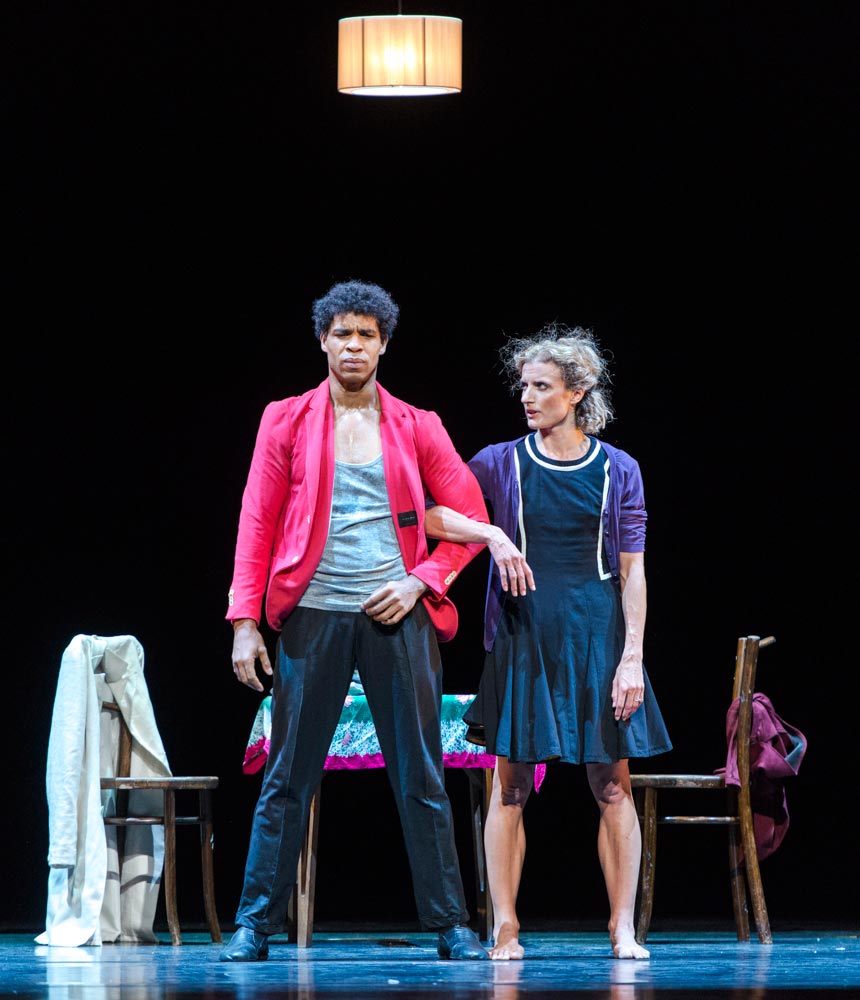
© Foteini Christofilopoulou. (Click image for larger version)
Acosta’s second performance was in Sight Unseen, a more peaceful – almost holy – work by Edwaard Liang where he was joined by fellow RB principal Zenaida Yanowsky (who DanceTabs recently interviewed). Here, the couple still displayed the purity and lyricism of their classical heritage despite the often broken and sharp-edged contemporary lines. To the accompaniment of traditional Georgian chanting and the violin playing of Omar Puente, they wove a mystical magic into their silky-smooth movements, always remaining elegant and fluid. Dressed in a white leotard with front and back panels, Yanowsky’s beautiful long limbs elongated and contracted with precision and musicality, while Acosta, like a Greek god in white tights and bare-chested was now in a more peaceful mode, again demonstrated his strength and command.

© Bill Cooper, ROH. (Click image for larger version)
While Cuba has long been recognised as a bastion for classical ballet with a reputation for excellent training and daredevil risk-taking dancers, there is also a strong contemporary faction as seen with the dancers from Danza Contemporanea de Cuba in George Céspedes’ Ecuacion, (and later Tocororo Suite.) Though beginning in silence, the four dancers are soon drawn by the hypnotic percussion of X Alfonso, to dance with precision and energy mostly inside a 10 foot square metal cube. It made compulsive watching.
Flux, choreographed by Russell Maliphant and danced by Alexander Varona certainly lived up to its Thesaurus description: undulating wave motion; rolling, ebb and flow, etc. The curtain rose on Varona crouched on all fours in a pool of light. The music started like a dripping tap and proceeded with jungle-like sounds as he kept mostly floor-bound, rolling, twisting and at one time encircling his patch, leaping from, and returning to, the ground like some swamp creature (well, that’s my interpretation, though probably he was a Cuban revolutionary on secret manoeuvres). It’s a mesmerising work and was well performed by Varona who danced the jagged steps with excellent control and elegance, thoroughly deserving the great cheer the audience gave him.

© Foteini Christofilopoulou. (Click image for larger version)
And finally that burst of Cuban sunshine in Tocororo Suite where fun was had by all, both on and off stage. The members of Danza Contemporanea, responded to the rhythms of the live ten-piece band with unbridled enthusiasm – the girls’ skirts swirling as hips vigorously swayed, while the boys leaped and flirted in the backstreets of Havana. Their joy was infectious and their stamina commendable. Carlos, playing himself as a young ballet student coming face-to-face with a street crowd, astounded with his faster-than-a whirling-dervish pirouettes and crackerjack barrel turns. His classical duet with National Ballet of Cuba ballerina Veronica Corveas was gentle and tender, while his confrontations with Varona, the roguish snake-hipped gang leader, were comic.
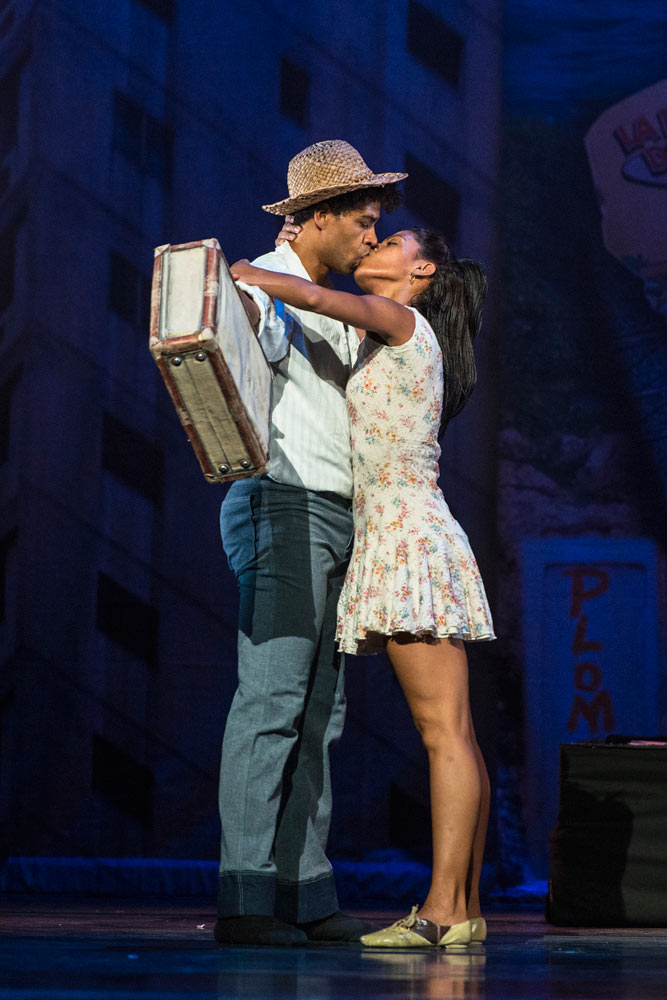
© Foteini Christofilopoulou. (Click image for larger version)
Ballet may be painful and tough on his body, as he has stated, but he showed he still is a great dancer, with all the right moves, and he does them with panache.












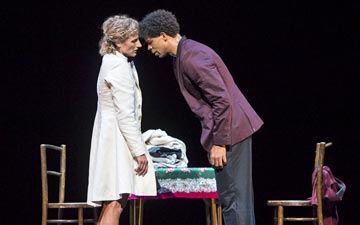
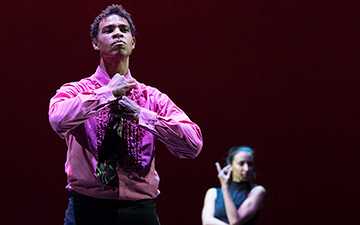


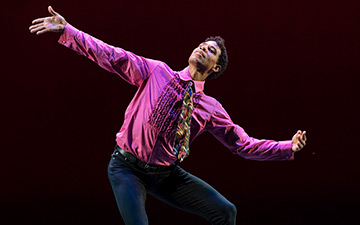
You must be logged in to post a comment.